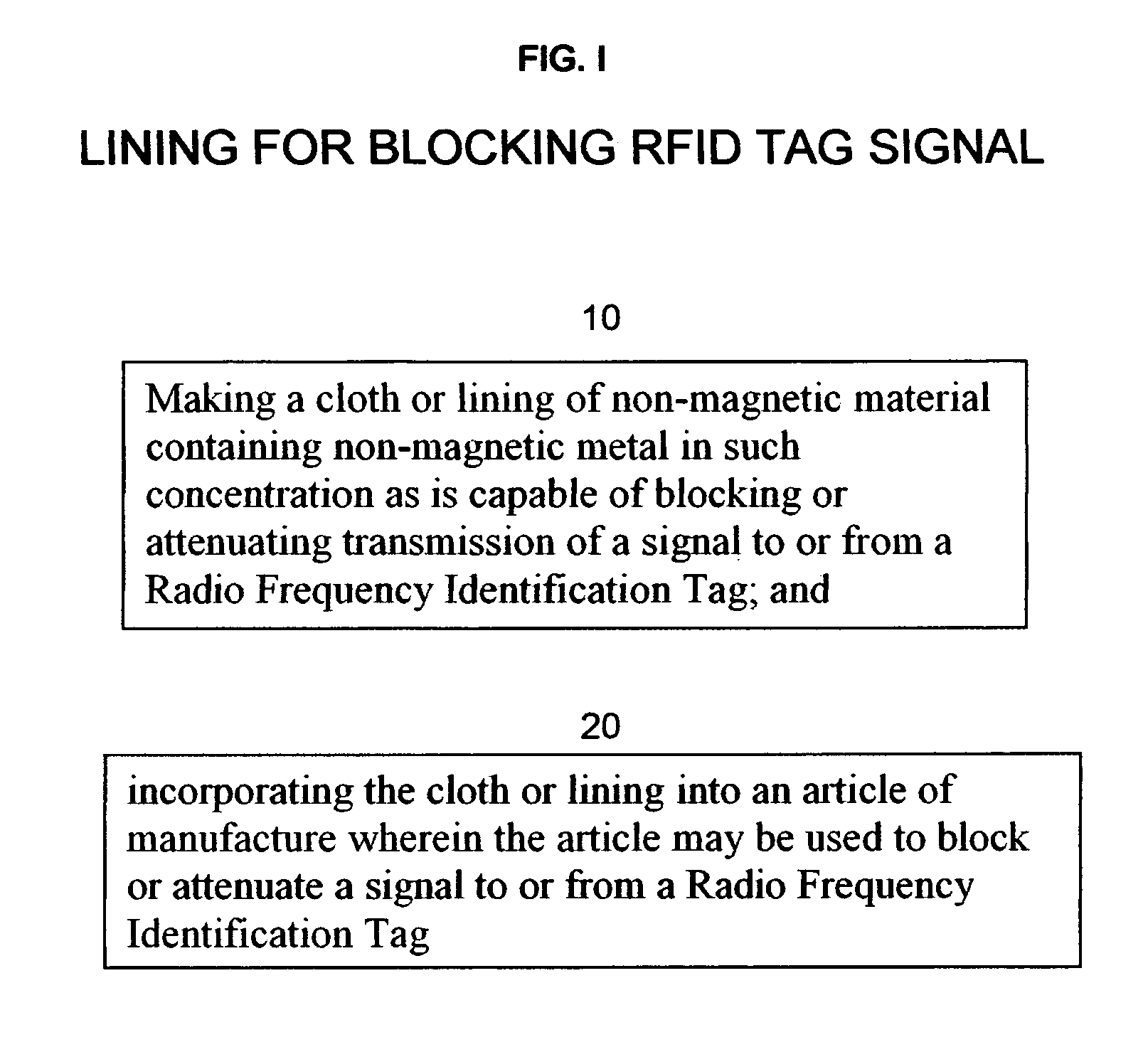LINING FOR BLOCKING WI-FI, ULTRA-SOUND, LASER, VHF, UHF, BLUE TOOTH, AND RFlD TAG SIGNAL
a technology of wi-fi and ultra-sound, which is applied in the field of blocking or attenuating the electromagnetic signal of radio frequency identification tagging, can solve the problems of releasing sensitive information that could potentially harm the owner and difficult to achieve effective shielding
- Summary
- Abstract
- Description
- Claims
- Application Information
AI Technical Summary
Benefits of technology
Problems solved by technology
Method used
Image
Examples
Embodiment Construction
[0023]FIG. 1 describes a process for blocking an RFID tag signal. The process comprises two steps. The first step (I 0) is making a lining of non-magnetic material containing non-magnetic metal in such concentration capable of blocking or attenuating transmission of a signal to or from said Radio Frequency Identification tag. The second step (20) is incorporating said lining into an article of manufacture wherein the article may be used to hold a radio frequency identification tag.
[0024]The typical non-magnetic metals are aluminum, copper, gold, silver, platinum, chromium, nano-carbon tubes and compounds containing these and other non-magnetic metals. Other embodiments of the method may use a paint, cloth, thread, gel, aerosol, nano-particle or ceramic with any combination of non-magnetic metals in particulate form, embedded within. Typical application of the invention include lining within manufactured articles such as backpacks, bags, boxes, briefcases, cases, envelopes, handbags,...
PUM
 Login to View More
Login to View More Abstract
Description
Claims
Application Information
 Login to View More
Login to View More - R&D
- Intellectual Property
- Life Sciences
- Materials
- Tech Scout
- Unparalleled Data Quality
- Higher Quality Content
- 60% Fewer Hallucinations
Browse by: Latest US Patents, China's latest patents, Technical Efficacy Thesaurus, Application Domain, Technology Topic, Popular Technical Reports.
© 2025 PatSnap. All rights reserved.Legal|Privacy policy|Modern Slavery Act Transparency Statement|Sitemap|About US| Contact US: help@patsnap.com


